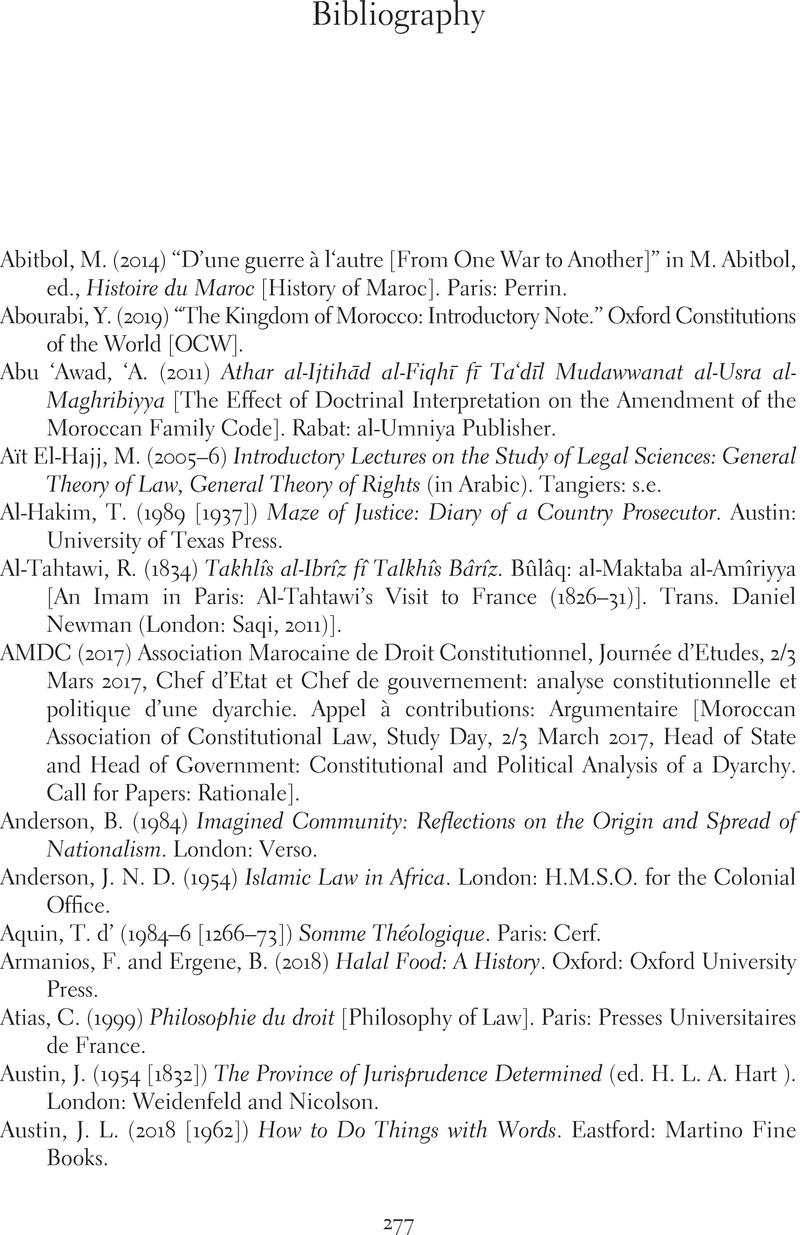Book contents
- Positive Law from the Muslim World
- The Law in Context Series
- Positive Law from the Muslim World
- Copyright page
- Dedication
- Contents
- Acknowledgments
- Introduction: Law Properly So Called, from an Islamic Vantage Point
- Part I The Concept of Law
- Part II Historical Ontologies
- Part III Legal Praxeologies
- Conclusion: A Praxeological Approach to Positive Law
- Notes
- Bibliography
- Index
- References
Bibliography
Published online by Cambridge University Press: 16 June 2021
- Positive Law from the Muslim World
- The Law in Context Series
- Positive Law from the Muslim World
- Copyright page
- Dedication
- Contents
- Acknowledgments
- Introduction: Law Properly So Called, from an Islamic Vantage Point
- Part I The Concept of Law
- Part II Historical Ontologies
- Part III Legal Praxeologies
- Conclusion: A Praxeological Approach to Positive Law
- Notes
- Bibliography
- Index
- References
Summary

- Type
- Chapter
- Information
- Positive Law from the Muslim WorldJurisprudence, History, Practices, pp. 277 - 298Publisher: Cambridge University PressPrint publication year: 2021

